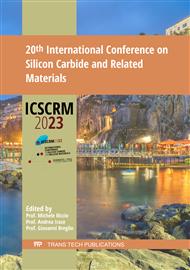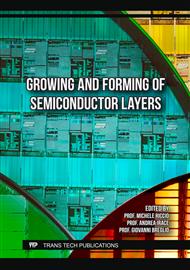p.47
p.53
p.59
p.65
p.71
p.77
p.83
p.89
p.97
Investigations into the Impact of Deposition or Growth Techniques on the Field Oxide TID Response for 4H-SiC Space Applications
Abstract:
The total ionising dose (TID) reliability of a phosphorous pentoxide (P2O5) treated SiO2 (silicon dioxide) layer is compared for the first time to other industrially relevant oxides formed on 4H-silicon carbide (SiC). Metal-oxide-semiconductor capacitors (MOSCAPs) are characterised before and after irradiation to ascertain changes in flat band voltage shift, leakage current, and dielectric breakdown (BV). Secondary ion mass spectrometry (SIMS) profiling reveals a significant phosphorus concentration near the SiO2/SiC interface, which led to improved TID resistance. The P2O5 treated oxide had the lowest leakage current at high voltage bias due to the high-temperature (1,000°C) anneal, though it had a significantly negative flat band voltage due to the high concentration of deposited phosphorus atoms. The thermal and P2O5 oxides demonstrated a TID resistance, suffering only minor shifts in flat band voltage, while the P2O5 oxide suffered the smallest decrease in its BV and the smallest leakage current rise, post-irradiation.
Info:
Periodical:
Pages:
83-88
Citation:
Online since:
August 2024
Keywords:
Permissions:
Share:
Citation:



